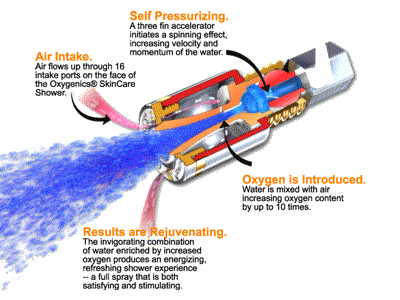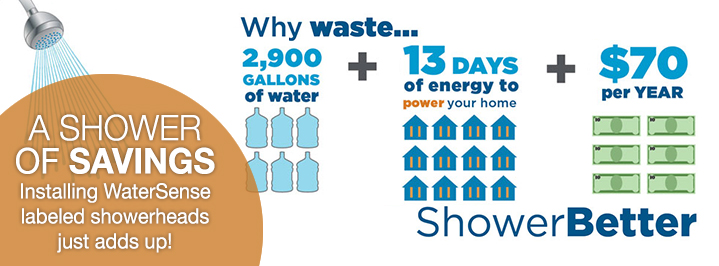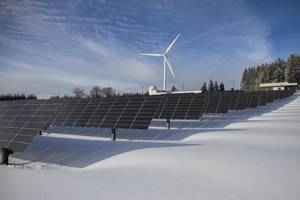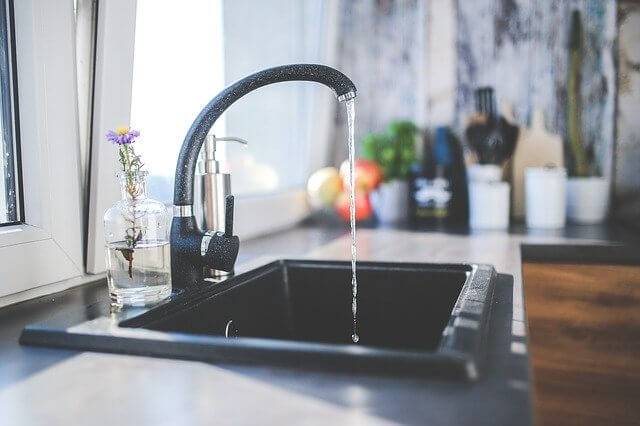Bathroom Products that Conserve Water: 3 Easy Tips [2021 Update]
This post will help you determine which products in your home consume the most water and how to conserve water the easy way.
Once you have a clear idea about water consumption, savings can be easily achieved, usually with a quite small investments.
Did you know that showers typically consume over a quarter of the average homes' water use?
Low-flow showerheads can be installed to ensure nice showers with much less hot water.
I'll explain that in a minute.
First, let's see how the faucet works:
Faucets: How They Work
Every time you wash your hands or do the dishes, you use a faucet. But have you ever wondered how it contains all that water pressure? If you put your thumb over the faucet, you can't stop the flow. Try it, and you will probably get a good soaking. Well, here is how it is done:
In an open faucet, the water flows through two chambers separated by a hole. Most water towers exert tremendous force on the water in their system. Water can be under pressure that exceeds 100 pounds per square inch.
Most faucets use a screw device to regulate the flow of water. When it is turned, it forces a washer down into the hole between the two chambers. As the washer begins to close the gap, it slows down the flow until it finally stops it.
The screwing action coupled with the lever action on the handle of the faucet makes turning it off and on so easy.
When leverage on the handle turns the screw, the washer is forced down a fraction of an inch at a time. Only side-way force (such as you might place on the handle) can push the washer back because friction is created at the point where the screw meets the threaded faucet.
The water is then held in check in the pipe until the handle is again turned in the opposite direction.
Low Flow shower explained
Efficient low-flow products conserve water efficiently and use around 5 liters of water per minute (or 1.5 gallons per minute - GPM), which is almost 40% less than average.
What are experts saying on how to conserve water and energy?

Installing and using more efficient products in all parts of the house can help to reduce water consumption further.
By replacing or upgrading your existing taps with efficient ones, it is possible to save 25-40% of your home's water use. An additional benefit is that low-flow taps (so-called "faucet aerators") and dual-flush toilets will also ease demand on your home sewer systems.
Look closely at the "Water Efficiency Labeling Scheme" rating of each product when purchasing or deciding what to install in your home.
The energy impact of using products that conserve water
Any use of hot water in your home requires a certain amount of energy to heat that water. So, if you do the math, it is clear that consumption reducing products have additional benefits in terms of saving the energy needed for water heating.
Finally, efficient low-flow showerhead not only saves water, but it also reduces the amount of energy required to heat that water.
So, what's the bottom line?
In case if you install low-flow taps and shower heads throughout your home, you'll be using 40% less hot water.
Using 40% less hot water means there is also 40% less energy used for water heating.
In addition to our water-saving tips, using shower heads like the low-flow could save us another couple hundred dollars in energy bills each year.
The taps we've installed throughout the home are another product that saves energy. They have a twin-lever mixing system that separates the control of cold and hot water, meaning that hot water flows when it is needed. This results in less hot water and, again, less energy used.

Saving water is important even if we're heating the water using solar thermal panels. The lower the volume of water for a hot shower, the smaller the solar thermal system can be used.
For example, the total energy used during a hot shower can be the equivalent of running an oven for well over an hour.
The average household spends between $400-$900 annually on water heating only, and showers use the most of that!
Even if you do not care about the environment, lower energy bills are a good reason to think about water conservation. So it is worth to apply some of our water-saving tips.


